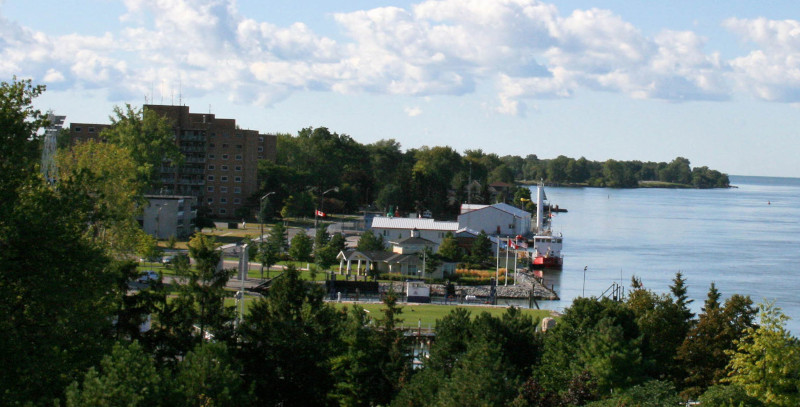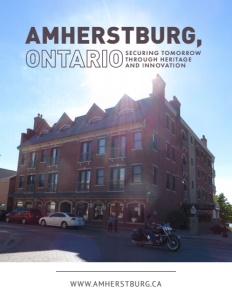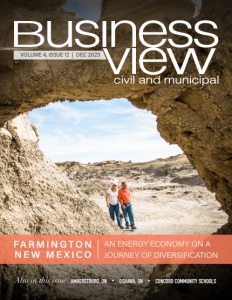Amherstburg, Ontario
Amherstburg, Ontario on the Rise: Securing Tomorrow through Heritage and Innovation
A blend of rich historical legacy with innovative economic and community development strategies, Amherstburg sets the stage for a vibrant and sustainable future.
Amherstburg, Ontario, a quaint yet progressive town, offers a unique blend of historic charm and modern amenities, making it an attractive destination for tourists and potential residents. Situated on the banks of the Detroit River, this picturesque municipality in Essex County boasts a rich historical tapestry, evident in its well-preserved 19th-century architecture and the renowned Fort Malden National Historic Site.
The town’s population, approximately 21,000, benefits from a tight-knit community atmosphere, where the warmth of small-town living is palpable. This sense of community is further enhanced by various annual events and festivals celebrating the town’s rich heritage and vibrant culture, attracting visitors from across the region.
Economically, Amherstburg is a hub of diverse opportunities. Its strategic location near major cities like Windsor and Detroit makes it a convenient and desirable place for businesses. The town has successfully attracted a mix of industries, from manufacturing to tourism, contributing to its stable economy. There has been a notable shift towards sustainable development in recent years, with investments in green initiatives and renewable energy projects positioning Amherstburg as a forward-thinking community.
Amherstburg: A Fusion of History and Progress

Mayor Michael Prue
Mayor Michael Prue, emphasizing the town’s transition from its industrial past, fervently speaks about revitalizing the local economy. “Amherstburg was once home to significant industrial activity, now transformed,” he notes. “We focus on utilizing our industrial sites, like the former Allied Chemical and Howard Industrial Sites, to create substantial employment opportunities.”
He underlines the town’s proactive approach to attracting businesses, highlighting the community improvement plan as a pivotal strategy. This plan offers enticing tax incentives to businesses, a move aimed at balancing residential growth with commercial and industrial development. “We’re striving for a self-sufficient Amherstburg, not just a suburb to Windsor,” he asserts, emphasizing the desire for a distinct community identity.
In a seamless transition, Mayor Prue segues into the historical aspect of Amherstburg. He recounts its significance, from being a prominent pre-1812 settlement to its role in the War of 1812 and the Underground Railroad. “Our rich history is not just a chapter from the past; it’s a continuous narrative we’re committed to preserving,” he explains. The mayor highlights the town’s efforts in maintaining over a hundred historical homes and landmarks like Fort Malden and the Freedom Museum. “These aren’t just tourist attractions; they’re a source of pride and an integral part of our identity,” he adds.
Echoing Mayor Prue’s sentiments, Valerie Critchley, the Chief Administrative Officer, sheds light on how Amherstburg’s historical legacy shapes its present identity. “Our history is not just a backdrop; it’s the essence of who we are,” she remarks. Critchley points out the deep-rooted sense of pride and identity among residents, many of whom have family ties stretching back generations.
She highlights recent redevelopment projects, such as transforming an old school into loft condominiums, as examples of how Amherstburg skillfully marries historic preservation with modern development. “These projects reflect our ethos – honoring our past while boldly stepping into the future,” she states. She notes that the town’s strategic planning is aligned with this philosophy, aiming to foster growth that respects and reflects Amherstburg’s heritage.
Expanding Residential Horizons in Amherstburg
Amherstburg’s residential landscape is undergoing a significant transformation, as outlined by Mayor Prue, reflecting a town poised for growth while grappling with challenges. He discusses the variety of residential projects awaiting development. He mentions the southwest quadrant, a large area poised for substantial housing development, and Kingsbridge, nearing its expansion limit with homes still on the market.
Mayor Prue also touches on an exciting development for the town’s riverfront area. “We plan to extend King’s Navy Yard into a showcase park,” he reveals, highlighting Amherstburg’s scenic riverfront as a critical feature of the town’s charm and potential for attraction.
Critchley adds her perspective, particularly on affordable housing. “As a part of Essex County, housing initiatives largely fall under the City of Windsor’s social services,” she explains. Critchley emphasizes the town’s role in facilitating such developments through supportive planning policies and procedural assistance, acknowledging limited resources at the municipal level.
Melissa Osborne, Director of Development Services and Deputy Chief Administrative Officer, echoing these sentiments, confirms the impact of labor shortages on housing projects. “We have several developments ready, but they can’t all proceed simultaneously due to the labor crunch,” she says. Osborne details the pipeline of over 400 homes and approximately 330 apartments across various developments. She also mentions ongoing efforts to incorporate affordable housing options, “We’re seeing interest from developers to partner with organizations like Habitat for Humanity,” Osborne notes, indicating a proactive approach towards inclusive community development.
Charting a Course for Industrial and Commercial Growth
Osborne further highlights the town’s industrial development prospects. “The Amherstburg Land Holdings property is a significant opportunity,” she explains. This 200-acre land parcel, ripe for development, has garnered increased interest following the council’s approval of an economic development Community Improvement Plan (CIP). “The CIP’s introduction, offering tax rebates and other financial incentives, has heightened interest, particularly with the Stellantis development in Windsor,” Osborne notes. She also mentions the Howard Industrial area, strategically located near the 401, which is currently being studied to transition from agricultural to industrial land. “This secondary study will determine the infrastructural needs and potential for future industrial development,” she adds.
Critchley then speaks about the town’s support for small businesses and entrepreneurs. “Our downtown core is thriving, with hardly any empty storefronts, a rarity in small southwestern Ontario communities,” she observes. This vibrancy results from the town’s efforts to support and retain entrepreneurs. Critchley highlights the success of securing a rural economic development grant, which has led to the launch of a business expansion and retention program. “This program is designed to assist entrepreneurs in growing and establishing their businesses,” she says, adding that the town’s economic development officer is actively involved in this initiative.
Osborne further elaborates on the business Expansion and Retention Program. “We’re employing techniques and tools from Omafra, ensuring a solid foundation for the program,” she says. She mentions the involvement of the Economic Development Advisory Committee, ensuring community engagement in these initiatives. “Amherstburg isn’t just a tourist destination; we have diverse business drivers, including agriculture, industry, and even distilleries and wineries,” Osborne notes, emphasizing the multifaceted nature of the town’s economic landscape and its potential for growth across various sectors.
Cultivating Workforce Development in Amherstburg
In Amherstburg, the collaboration between educational institutions and the local government is pivotal for workforce development, a crucial aspect of the town’s growing economy and community welfare.
Mayor Prue proudly speaks about the new NorthStar High School, a significant educational advancement for the town. “This high school is a hub of vocational training, offering specialized welding, automotive mechanics, and carpentry programs,” he says. The facility, equipped with cutting-edge technology, is designed to impart practical skills to students and pave their way toward higher education or immediate employment opportunities. “We see this as a cornerstone for nurturing a skilled workforce right here in Amherstburg,” Mayor Prue adds.
The mayor also acknowledges the role of higher education institutions in Windsor, notably the University of Windsor and Saint Clair College, in complementing local educational efforts. “Our partnership with these institutions is vital,” he says, noting the availability of bus services facilitating student commute between Amherstburg and Windsor. “We hope these students return to Amherstburg, bringing their skills and knowledge to further enrich our community.”
Critchley builds on this, highlighting the strong relationship with post-secondary institutions. “We actively engage with these institutions to identify and address skill gaps in our community,” she says. She mentions a recent initiative to tackle the shortage of building inspectors across the province, showcasing proactive steps taken by educational institutions in response to municipal needs. “It’s an excellent example of how educational institutions and municipalities can work hand in hand for mutual benefit,” Critchley adds, underscoring the importance of such collaborations in workforce development.
 Forging Strategic Partnerships for Amherstburg’s Growth
Forging Strategic Partnerships for Amherstburg’s Growth
Strategic collaborations with various organizations and entities buoy Amherstburg’s journey toward economic development and community enhancement. Mayor Prue talks about the ongoing efforts to establish a Business Improvement Area (BIA) in the downtown core. “Though it’s a challenging task, there is progress, and we believe it’s achievable,” he says. He also mentions the town’s Economic Development Committee, which is crucial in advising the council on strategies to make Amherstburg more business-friendly and retain local enterprises.
Critchley chimes in, highlighting key partnerships that drive the town’s agenda. “A significant collaborator is the West Windsor Essex regional economic development office,” she notes. This entity, representing multiple municipalities, aids in foreign direct investment and provides essential information on various federal and provincial programs. Critchley also emphasizes the importance of utility providers in community development. “Projects like Enbridge’s gas main to Boblo Island and collaborations with Essex Energy and Essex Power Lines are crucial for our infrastructure and service delivery,” she explains. These partnerships are instrumental in meeting the energy needs for both residential and industrial expansion.
Osborne adds to the discussion, bringing up additional partnerships integral to Amherstburg’s development. “We’re engaged with WeTech, an innovation group that supports technology businesses,” she says. This collaboration is part of their broader Business Retention and Expansion (BR&E) program. She also mentions the role of local credit unions, like Libro Credit Union, in supporting small businesses. “These financial institutions are key in assisting start-ups and small enterprises within our community,” Osborne remarks, highlighting the diverse network of partnerships that contribute to Amherstburg’s vibrant economic and community landscape.
Envisioning Amherstburg’s Future: Priorities and Aspirations
As Amherstburg looks towards the next 18 months and beyond, the town’s leaders share their visions and priorities, reflecting a unified growth and community development goal.
Critchley begins by expressing her optimism for Amherstburg’s future. “The potential in Amherstburg is boundless, given our rich history and strong community spirit,” she says. Her focus for the near future is on activating industrial lands to diversify the town’s tax base, which she believes will fuel further development in recreation, park expansion, and downtown revitalization. She also emphasizes the importance of collaborating with indigenous partners, particularly the Caldwell First Nation, recognizing their integral role in the town’s growth journey.
Osborne echoes Critchley’s emphasis on industrial development. “Activating the industrial lands is our top priority,” she asserts. She highlights the upcoming sale of the General Amherst High School property as a significant opportunity for community enhancement. “We’re eager to see this prominent location transformed into something extraordinary,” Osborne notes. She outlines the completion of the official plan update, zoning bylaw update, and Heritage Conservation District as key initiatives supporting these developments.
Mayor Prue concludes by reaffirming his commitment to commercial and industrial development, a cornerstone of his election platform. “I believe we’re on the brink of substantial growth and development, which will greatly benefit our community,” he concludes, painting a picture of a future Amherstburg thriving, innovative, and rooted in community values.
AT A GLANCE
Amherstburg
What: A historic town undergoing innovative economic and community development
Where: Essex County, Ontario, Canada
Website: https://www.amherstburg.ca/en/



